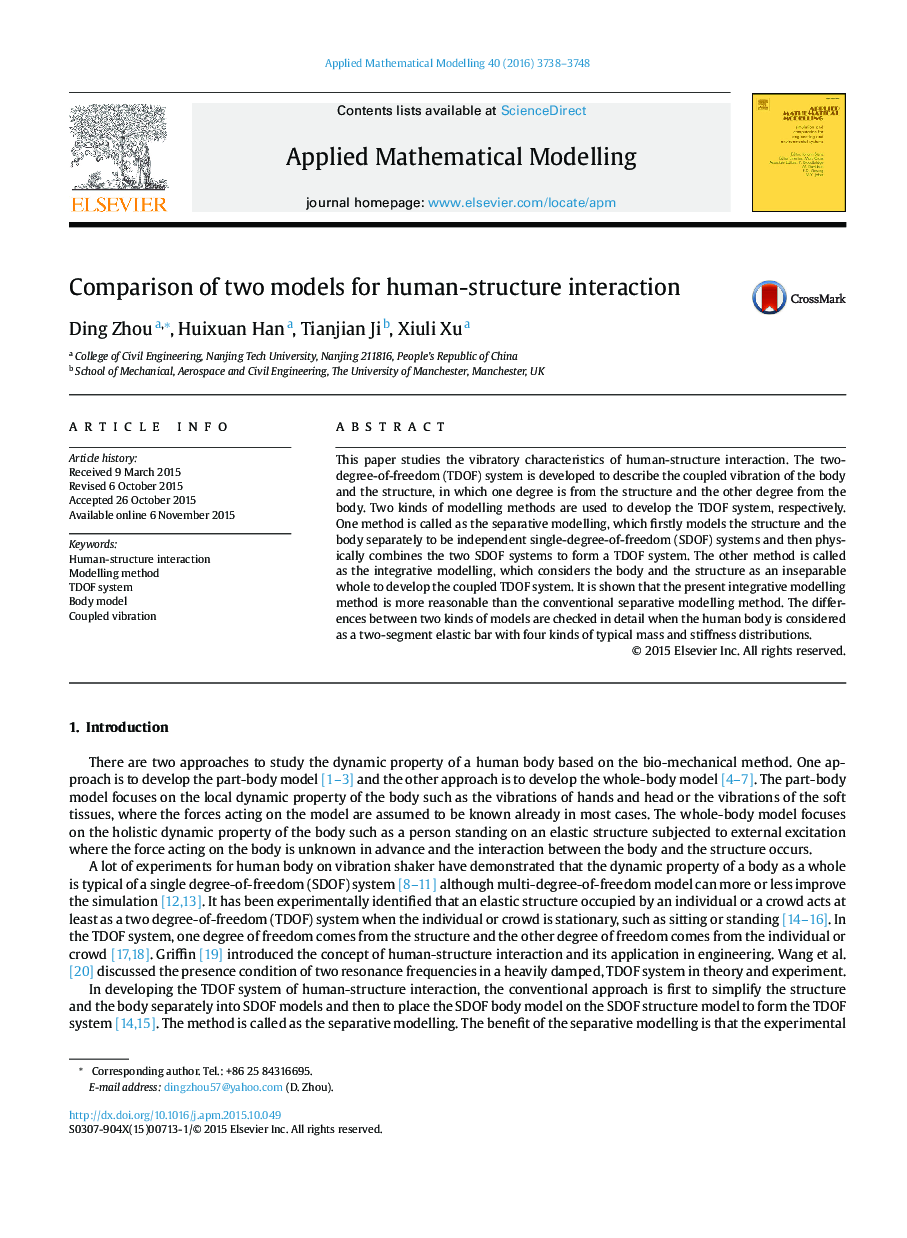| Article ID | Journal | Published Year | Pages | File Type |
|---|---|---|---|---|
| 1702905 | Applied Mathematical Modelling | 2016 | 11 Pages |
•A TDOF integrative model is developed.•The present model is more reasonable than the conventional model.•The human body is modeled as an elastic bar with two segments.•The difference between two models is discussed in the ratio form.
This paper studies the vibratory characteristics of human-structure interaction. The two-degree-of-freedom (TDOF) system is developed to describe the coupled vibration of the body and the structure, in which one degree is from the structure and the other degree from the body. Two kinds of modelling methods are used to develop the TDOF system, respectively. One method is called as the separative modelling, which firstly models the structure and the body separately to be independent single-degree-of-freedom (SDOF) systems and then physically combines the two SDOF systems to form a TDOF system. The other method is called as the integrative modelling, which considers the body and the structure as an inseparable whole to develop the coupled TDOF system. It is shown that the present integrative modelling method is more reasonable than the conventional separative modelling method. The differences between two kinds of models are checked in detail when the human body is considered as a two-segment elastic bar with four kinds of typical mass and stiffness distributions.
